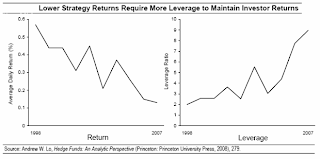Is the US banking sector having a déjà vu of 2008?
The Economist suggests so (bold emphasis mine)
Wild gyrations in stockmarkets; banks' share prices falling like stones; politicians stepping in to back-stop lenders for fear of collapse. The echoes of 2008 are alarming. Morgan Stanley is one of the big casualties: fears apparently caused by its exposure to European assets led its share price to fall by 17% over the past two days of trading. You have to go back to December 3rd 2008 to find the last time the bank's stock closed at the same price as it did yesterday, even if it still sits 36% above its 2008 nadir. A French bank, Société Générale, has already breached its 2009 low, hitting €15.31 in late September, although it has bounced back by 24% since then. Bank stocks may now be approaching levels seen in the depths of the financial crisis but broader stockmarket indices still have a long way to go to reach that mark. That won't last if the banks get into real difficulties.
Bank stocks have not been only suffering from depressed share prices but have likewise seen their default risks surging.
According to Bespoke Invest (chart above from Bespoke)
“a gain in CDS prices is a bad thing, as it means that default risk has gone up. And it has gone up significantly for financial companies once again this year. For the majority of financials, CDS prices are still not as high as they were during the financial crisis, but they're starting to get close. And interestingly, while the European banking system is the one that is supposedly in trouble, two US financials are up the most this year -- Morgan Stanley and Goldman Sachs.”
I’d further add that banking sector looks highly dependent on Bernanke's Quantitative Easing (QEs) programs.
I previously noted of the timeline for the previous QEs,
The timeline for QE 1.0 is officially from March 2009 to March 2010, and QE 2.0 from November 2010 to June 2011
The Philadelphia Bank Index exhibits that since the closure of the previous two quantitative easing programs by the US Federal Reserve, shown by the green ellipses, the banking index either wobbled (as in post QE 1.0) or has been in decline (post QE 2.0).
What this implies is that despite the trillions thrown by the US Federal Reserve, the balance sheets predicaments of the banking system have not gone away. Think of all the resources wasted just to save the Bernanke's most preferred sector.
To add, the still foundering property sector continues to weigh on the banking sector’s balance sheets.
Such dynamic seems no different with the Dow Jones Financial Index.
This means that interventions had only masked the problems, which resurfaces everytime such government support ended.
Also given that US banks have substantial exposures to European banks, it isn't farfetched to perceive a potential contagion from any further deterioration in the latter's banking sector.
So either we see the team Bernanke redeploying the modified version of the 'helicopter option' through QE 3.0, to bolster the flagging US banking and financial sector soon, or we will see many bankruptcies and mass liquidations that would exacerbate the current pressures on the global financial markets.
My guess is Ben Bernanke won’t like to have his hands bloodied and would rather resort to the “kick the can" option.

















